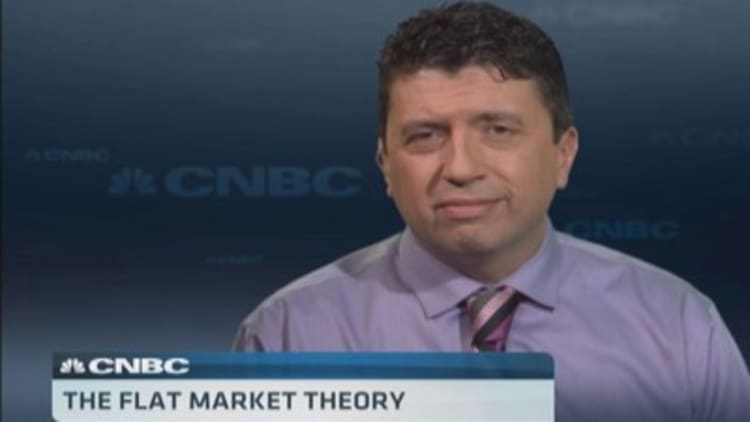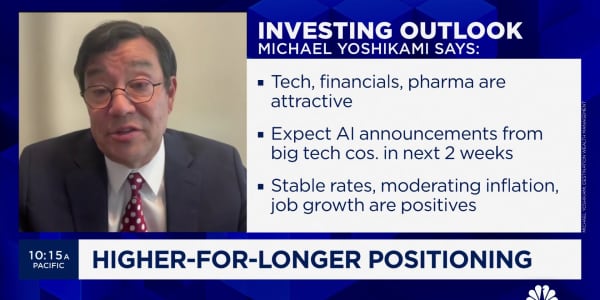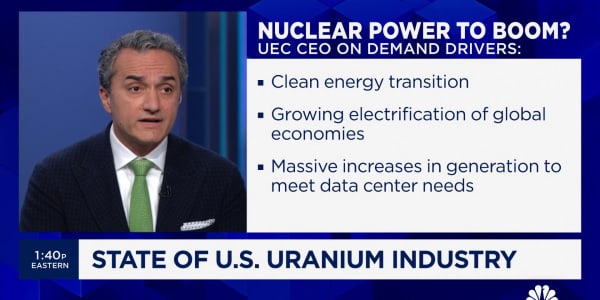
There are lots of reasons to like the stock market and lots of reasons not to like it. By the end of the year they may just balance out and yield a big, giant nothing.
That's the view of analysts at Stifel Nicolas, who have long held a bullish view that is now becoming more cautious. Though it's out of consensus for the otherwise strongly bullish sentiment from Wall Street watchers, trading so far in 2014 certainly seems to bolster the flat-market argument. Stifel joins Deutsche Bank and Jim Paulsen at Wells Capital Management in a small crowd of analysts projecting little net change this year.
"The "static" tug-of-war between reflation & deflation is misleading," Stifel strategist Barry B. Banister said in an analysis. "We expect that by the time 2014 ends, a break one way or the other is coming."
(Read more: Dick Bove sees recession, 7% rate...in a few years)
In fact, Banister believes market weakness is likely to persist through the year as stimulus efforts from the Federal Reserve lose their bite and investors are no longer willing to pay higher prices for stocks. He cites 10 reasons for his conclusion:
1. The firm's own change in sentiment after being high on the market through the massive 2013 rally. The view is informed by a belief that the Fed policy handoff to sustainable gross domestic product gains in the U.S. and abroad will be less than successful.
2. A break in the so-called multiple expansion that has seen price-to-earnings ratios grow and push stock prices higher. Fed tapering of its monthly asset purchase program would reduce the monetary base and pressure discount rates higher.
3. The Fed's "unwillingness to accept market-clearing price deflation," or the central bank's refusal to allow price-lowering market forces to take hold. Banister noted that the Fed's efforts now "are a vain attempt to lower the cost of capital in lieu of accepting price deflation."
4. Rate increases will take their toll on business capital expenditures—considered a key in helping businesses grow sales after years of cost-cutting—as well as housing.
(Read more: Beware the high-fliers: Trouble could be lurking)
5. The Fed has fallen behind the curve in terms of needing to tighten policy and would get caught if inflation surges ahead of expectations.
6. Lagged effects from the 2013 rally. Strategists had been fearing that the "melt up" in stock prices—the gained 29 percent—would lead to a correction in 2014.
7. Overheated bullish sentiment, a point that is more detectable among Wall Street analysts than retail investors, who remain a bit cautious.
8. Institute for Supply Management data excluding inventories have risen and fallen consistently with the market and are pointing toward consolidation around the index's 1,850 mark—about where it stands now.
(Read more: Tune out noise and enjoy bull market: JPM's Lee)
9. Valuation levels with the index trading around 15 times forward earnings, coupled with 2 percent inflation that usually coincides with 17 times trailing earnings, mesh with current market levels.
10. Wall Street's buoyant view on earnings does not jibe with an indicator comparing silver and gold prices.
Stifel's solution, then, to the somnambulant U.S. market? Buy international.
—By CNBC's Jeff Cox. Follow him on Twitter @JeffCoxCNBCcom.






